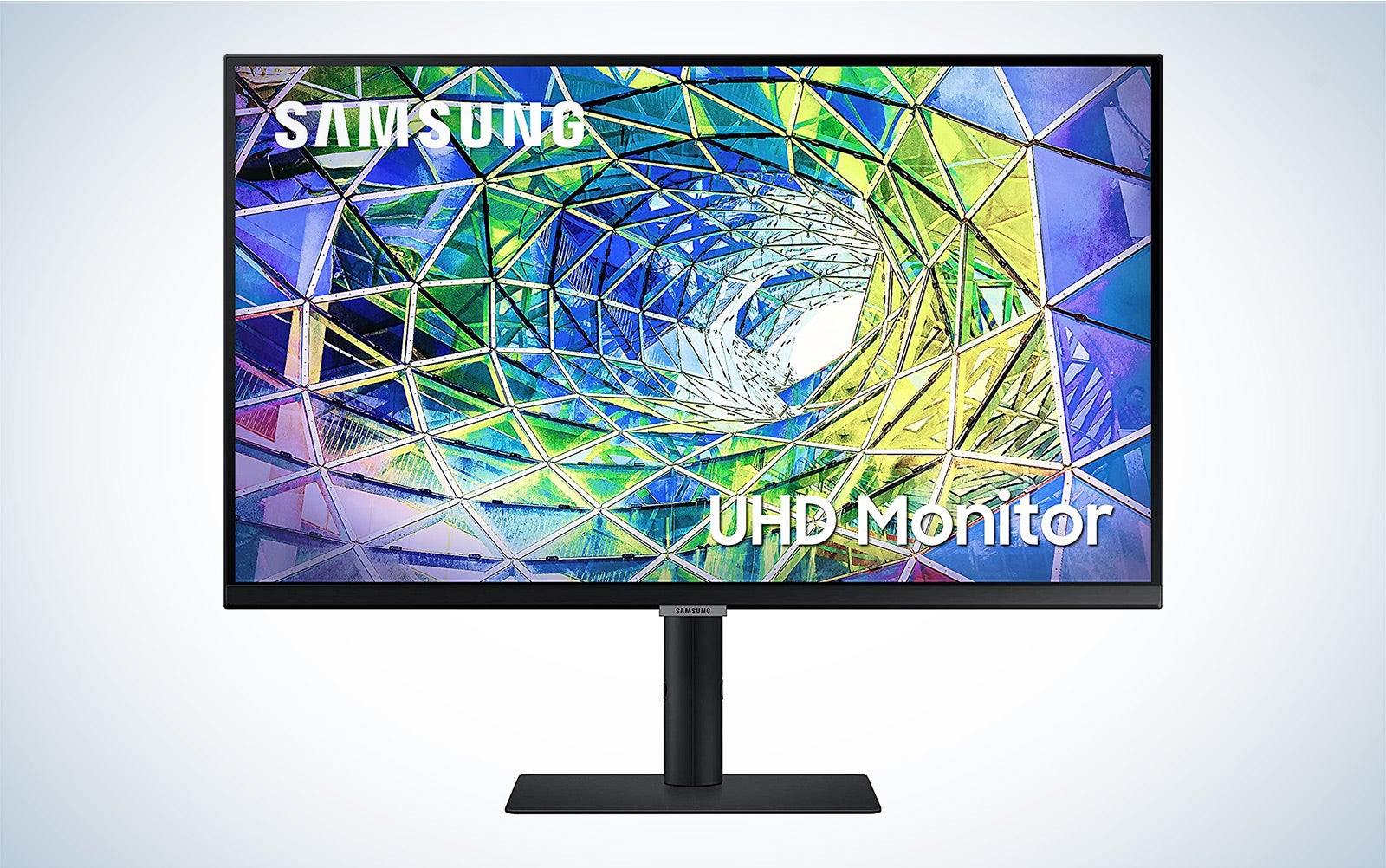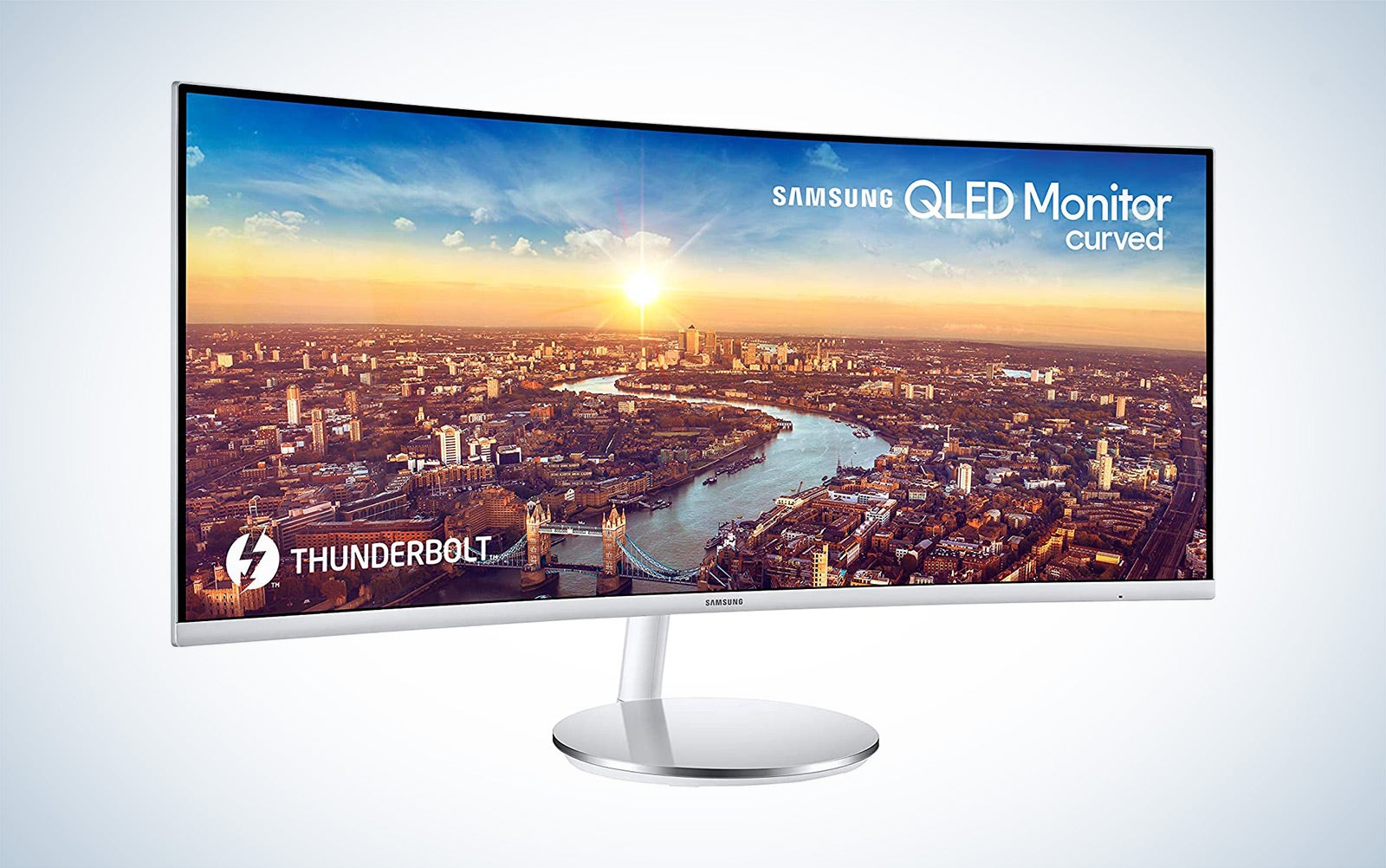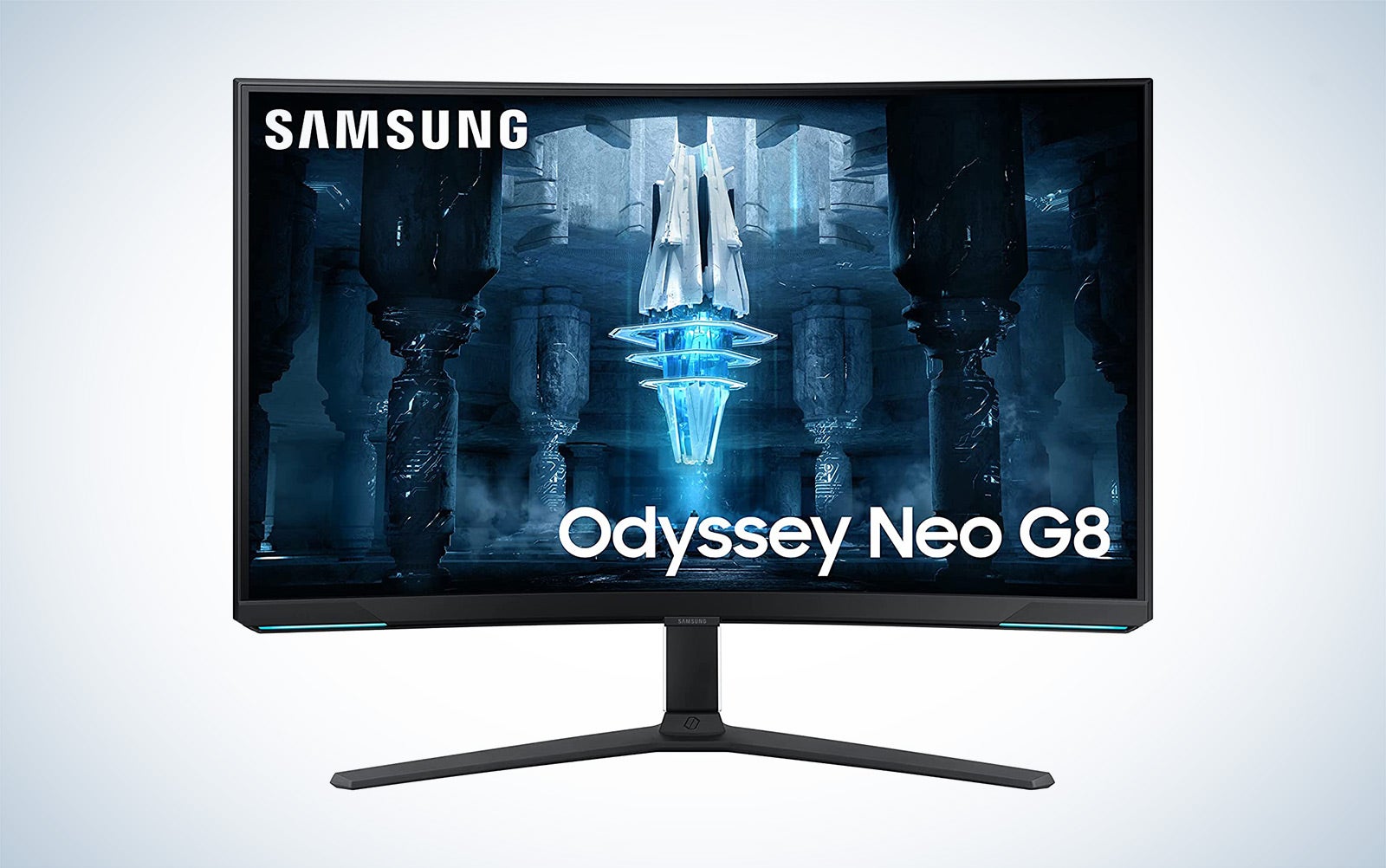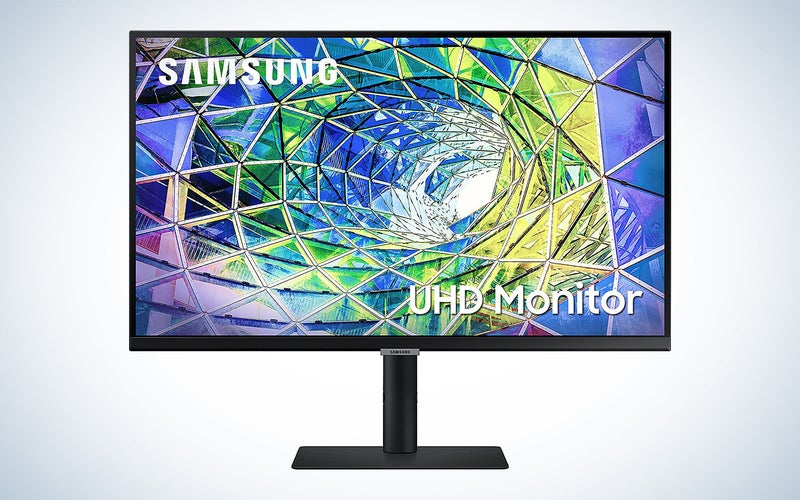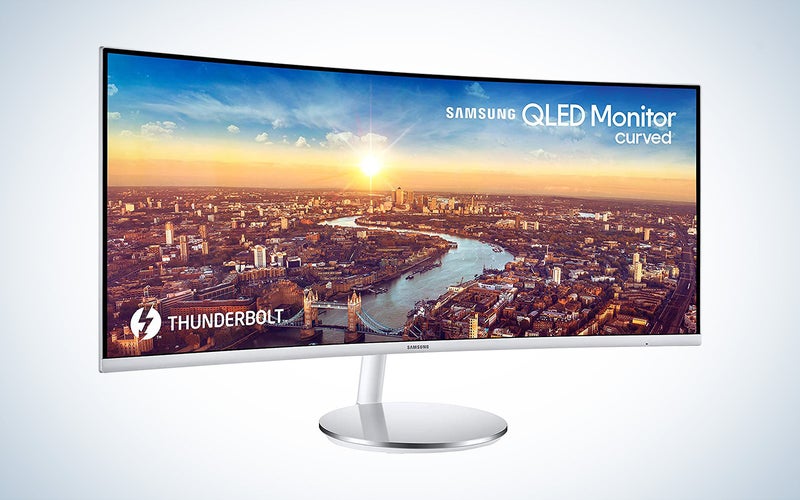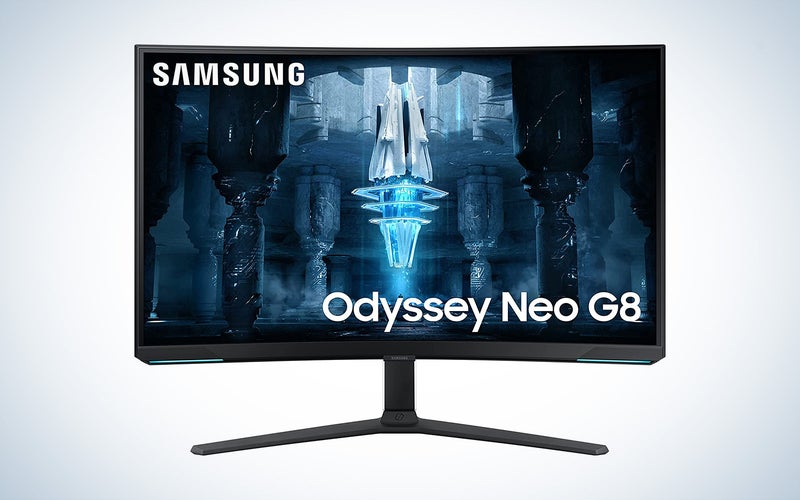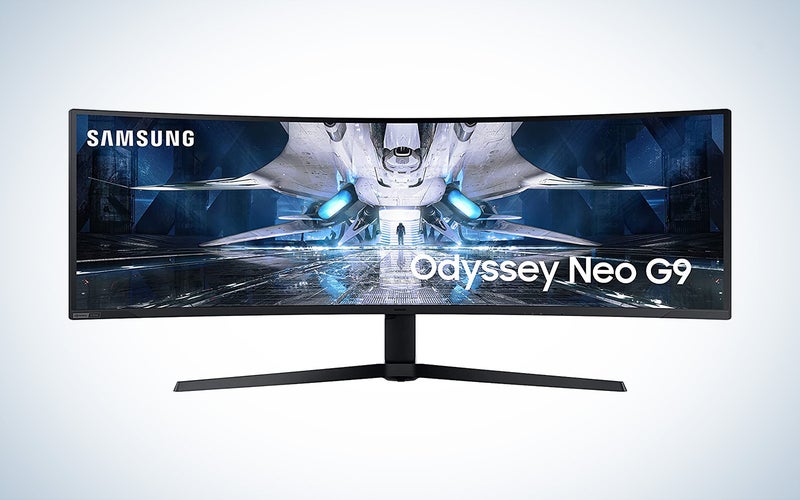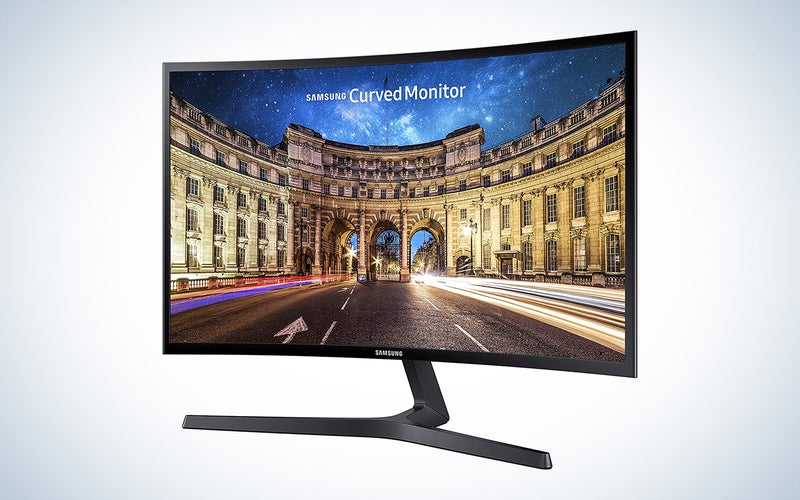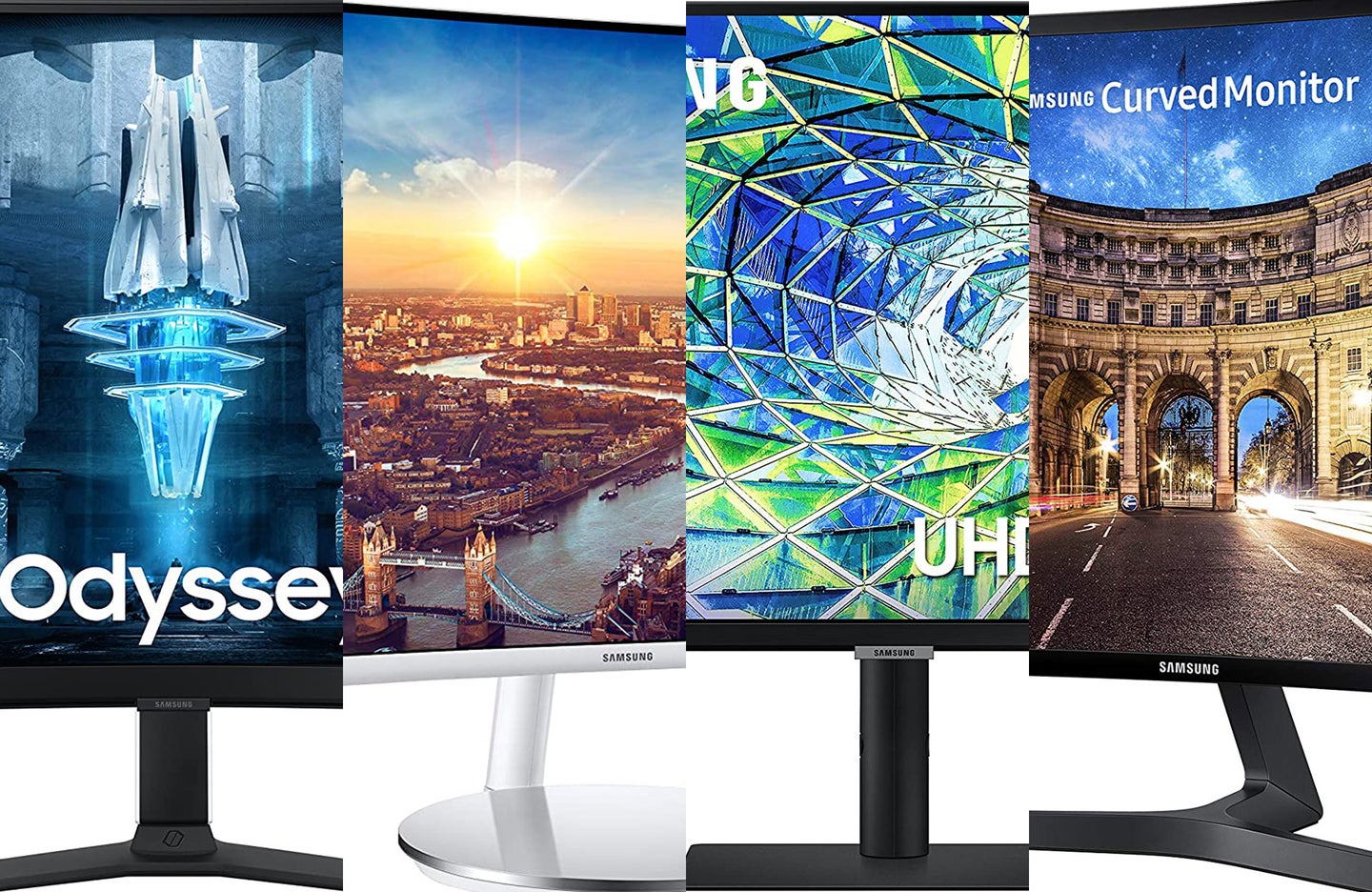
We may earn revenue from the products available on this page and participate in affiliate programs. Learn more ›
There is no shortage of Samsung monitors, with options ranging from budget office choices to high-end gaming displays. The tech giant has long been a powerhouse in the technology realm, especially with its TVs and smartphones. While many of its monitors are geared towards gaming, its options span the full spectrum, so chances are there is a monitor that will fit your needs. The best Samsung monitors offer an excellent resolution, fast refresh rates, and accurate colors for an enjoyable experience no matter what you are doing.
- Best overall: SAMSUNG S80A 27 Inch 4K Monitor
- Best curved: SAMSUNG J791 Series 34-Inch Ultrawide QHD
- Best for gaming: SAMSUNG 32″ Odyssey Neo G8
- Best ultrawide: Samsung Odyssey Neo G9
- Best budget: SAMSUNG 23.5” CF396
How we picked the best Samsung monitors
The writers and editors at Pop Photo have tested and used a wide range of photography peripherals, including monitors, over our decades in the industry. As a result, we’ve learned what makes monitors excellent and what features to pay attention to most.
When selecting the monitors included here, we prioritized a balance of features, quality, and price. We aimed to choose options suitable for various applications, from general use to high-level gaming and, of course, creative content creation. As a result, resolution, color accuracy, brightness, and contrast were primary drivers in our decisions. We also focused on different price points to provide options for a wider range of individuals.
The best Samsung monitors: Ratings & reviews
Best overall: SAMSUNG S80A 27 Inch 4K Monitor
Samsung
Why it made the cut: With a good balance of price, quality, and features, this 27-inch 4K LCD monitor is a well-rounded choice.
Specs
- Size: 27 inches
- Display type: LCD
- Panel type: IPS
- Resolution: 4K 3840 x 2160
- Refresh rate: 60Hz
- Color space coverage: 99% sRGB coverage
Pros
- Built-in speakers
- Vibrant colors
- 4K resolution
- Excellent value
Cons
- Speakers are lackluster
If you don’t need a fancy, high-end monitor but still want a quality display, Samsung’s S80A provides a good mix of quality at a very reasonable price. There aren’t many 4K displays at this price point, so if you want high resolution without an exceptionally high cost, this is a top choice.
The colors of this monitor are vibrant, in large part thanks to the IPS panel. It covers 99% of the sRGB colorspace, and colors come pretty accurate right out of the box. Of course, if you are doing color-intensive work, you’ll still want to calibrate with dedicated calibration tools, but it will look excellent and spot on for most users.
The 60Hz refresh rate is plenty fast for everything other than the most intense gaming. It has wide viewing angles, and the included stand is highly adjustable. It is also VESA compatible should you want to mount it to the wall or a monitor arm. While 27-inches isn’t all that large, especially for a 4K display, the small size helps keep the price down even with lots of quality and high-end features.
Best curved: SAMSUNG J791 Series 34-Inch Ultrawide QHD
Samsung
Why it made the cut: This ultra-wide display offers more real estate for apps or games, has a fast 100HZ refresh rate, and it covers 125% of the sRGB color space, providing accurate colors.
Specs
- Size: 34 inches
- Display type: LCD
- Panel type: VA
- Resolution: WQHD 3440 x 1440
- Refresh rate: 100Hz
- Color space coverage: 125% sRGB, 92% Adobe RGB, 92% DCI-P3, 88% NTSC, 88% CIE1976
Pros
- Good color gamut coverage
- Thunderbolt 3 ports provide 85W and 15W of charging power
- Sleek, minimal design
- Built-in 7-watt stereo speakers
Cons
- No HDR support
Curved monitors are becoming more popular, and this 34-inch Samsung monitor is a great choice if you want to dive into the curved world. It has a 1500R curvature, which means it’s close to our field of vision (which is accepted to be 1000R) and should provide a comfortable viewing experience. It also means that it’s recommended you sit 1.5 meters away from the monitor for the best viewing experience.
One big perk of this monitor is that it includes two Thunderbolt 3 ports, which provide 85W and 15W of charging power. You’ll be able to charge your laptop through the monitor instead of running cords everywhere. Beyond that, there is also a DisplayPort 1.2 and HDMI 2.0 for input and two USB Type-A ports for output.
The Samsung J791 does support up to 16.7 million colors and covers 92% of the wide DCI-P3 color space. While it isn’t quite as good as monitors specifically designed for photo or video editing, it will provide accurate colors, especially with calibration, so you can use it for creative work. Unfortunately, there is no HDR support, so you won’t be able to take advantage of HDR games. But, the monitor does have built-in 7-watt stereo speakers, which are quite good for monitor standards.
Best for gaming: SAMSUNG 32″ Odyssey Neo G8
Samsung
Why it made the cut: At 240Hz, the Neo G8 offers a faster refresh rate in a 4K monitor than anything else available at the consumer level, making it a top-tier gaming monitor.
Specs
- Size: 32 inches
- Display type: LCD
- Panel type: VA
- Resolution: 4K 3840 x 2160
- Refresh rate: 240Hz
- Color space coverage: 95% DCI-P3
Pros
- Ultra wide angle
- Impressively fast refresh rate
- 4K resolution
- 1000R curvature
Cons
- Included stand is limited in movements
- Pricey
If you are a serious gamer, you can’t get much better than the Odyssey Neo G8. Its 240Hz refresh rate is the fastest available in 4K monitors. It also has a speedy 1 ms response time. As a result, your games will be incredibly smooth and highly detailed.
The ultra-wide angle with its 1000R curvature–which mimics our eyes–provides an immersive experience. It will feel natural and be more comfortable for longer periods of time than flat displays. Unfortunately, the stand is a bit limited in its swivel range, reducing its ergonomics. But, since it is 100 x 100mm VESA compatible, you can always attach a monitor arm for better positioning.
The monitor also supports 1.07 billion colors and covers 95% of DCI-P3 color space. Plus, it’s HDR10+ compatible, offers a 1,000,000:1 contrast ratio, and has a typical brightness of 350 nits or up to 1000 nits of peak brightness. Colors will be accurate, bright, and vibrant for your games. And you’ll also be able to trust the display for content creation as well.
Best ultrawide: Samsung Odyssey Neo G9
Samsung
Why it made the cut: This monster of a monitor offers up a 49-inch diagonal and 32:9 aspect ratio, plus a 2500:1 static contrast ratio, and a fast 240Hz refresh rate.
Specs
- Size: 49 inches
- Display type: LCD
- Panel type: VA
- Resolution: QHD 5120 x 1440
- Refresh rate: 240Hz
- Color space coverage: 88% NTSC, 125% sRGB, 92% Adobe RGB, 95% DCI-P3
Pros
- Immersive ultra-wide display
- Fast refresh rate
- Abiilty to connect and display two different sources
- Excellent brightness and contrast
Cons
- No USB-C connectivity
- Backlight grid visible at times
Samsung’s Odyssey Neo G9 is an impressive monitor; there’s no getting around it. With a 49-inch diagonal, it’s larger than a lot of TVs used to be. The 32:9 aspect ratio is wide, immersive, and excellent for multitasking. You can even connect two different sources and view them simultaneously to take advantage of all that real estate.
The 1000R curve does reduce viewing angles. But, if you work solo and can sit directly in front of the monitor, it shouldn’t be an issue. You’ll also get 1000 nits of peak brightness and a 2500:1 contrast ratio, so even if your room is a little on the bright side, you’ll be able to see your screen just fine.
The 240Hz refresh rate and 1ms response time are seriously speedy and perfect for gaming, which is definitely the intended use of this Samsung monitor. While the color performance isn’t up to par with editing-specific monitors, it does cover 125% of sRGB and 95% of the wider DCI-P3 color spaces, so it will be able to handle photo and video editing. Unfortunately, some have reported being able to easily see the backlight grid, which could be an issue when doing some serious retouching work. It may not be an issue for some, but it is something to keep in mind.
Best budget: SAMSUNG 23.5” CF396
Samsung
Why it made the cut: This budget monitor is a great way to get started with a curved monitor without spending too much.
Specs
- Size: 23.5 inches
- Display type: LCD
- Panel type: VA
- Resolution: HD 1920 x 1080
- Refresh rate: 60Hz
- Color space coverage: Not provided
Pros
- Good contrast
- Great color for a budget monitor
- Affordable for a curved monitor
- Excellent brightness and contrast
Cons
- Stand isn’t very adjustable
- Limited ports
Curved monitors tend to fall in the expensive, high-end monitor category, but this Samsung monitor provides a more affordable option for those wanting to experience the curve. And its 1800R curvature is rather gentle, so it won’t take a ton of getting used to like more dramatic curves.
As we would expect on a budget monitor, there are limited ports. Unfortunately, it only has one HDMI, one VGA, and a 3.5mm headphone jack. The stand also isn’t all that ergonomic, with limited movements. But, it is VESA compatible (100mm x 100mm), so you can easily attach it to a more robust monitor arm.
One area this monitor really excels despite the low price is color performance. While Samsung doesn’t provide color space coverage numbers, it does specific support for 16.7 million colors, which is the same as the much more expensive SAMSUNG J791 mentioned above. Reviews specify excellent colors with equally impressive contrast and brightness. If you are just getting started with photo or video editing, this could be a fantastic choice as a result.
Things to consider before buying the best Samsung monitors
Before deciding on a monitor, it’s important to assess what you will mostly be using the monitor for. Different activities and uses call for a focus on different specs. For example, what works well enough for general web browsing won’t quite cut it for serious gaming. And while you can use a monitor for just about anything, you could spend an unnecessary amount on features you don’t really need. So before considering the various features listed below, ask yourself if you will primarily be gaming, watching videos, editing content, or more basic web browsing and work use.
Size and resolution
The size and resolution of a monitor are two of the most essential aspects of any monitor. And while they are two separate specs, they are intertwined, so it’s important to consider them in tandem.
Resolution refers to the pixel dimension of a display in width by height format. You’ll sometimes see it noted as a single number, such as “1080p,” but this correlates to a 1920 x 1080 pixel resolution. The higher the resolution or, the more pixels a display has, the more details you’ll be able to see.
There are three resolutions that you will mostly see with monitors. 1080p–otherwise known as full HD, FHD, or HD–is now the lowest standard resolution. It is perfect for most general uses. The next step is 1440p (2560 x 1440 pixels), also called quad HD or QHD. The level of detail you’ll get from QHD is ideal for gaming, photo editing, and other types of creative work. Finally, 4K–UHD (2380 x 2160 pixels)–is considered the premiere resolution for high levels of detail. These monitors can get pricey, though, and they may be overkill for many types of use.
So, where does size factor into all this? If you get a large monitor with a lower resolution, expect to see sharpness decline because there are fewer pixels per inch on the display. Going big doesn’t always mean better quality if the resolution doesn’t match the screen size. Likewise, getting a 4K resolution monitor in a small screen size may mean you won’t actually notice all the fine details, so you could be spending extra dollars unnecessarily.
Broadly speaking, with a 24-inch monitor, 1080p is ideal. As you step up to 27 inches, aim for 1440p. And finally, if you want a larger screen, perhaps something over 32 inches, it will be worth spending the extra money and getting a 4K display. These are general recommendations, and there are certainly monitors worth purchasing that don’t follow these guidelines, but they can give you a place to start.
Panel type
LCD monitors are available in three different panel types, each impacting performance and quality differently.
Twisted nematic (TN) panels are the oldest type available. They offer fast refresh and response rates at affordable prices, making them great for gaming. But, the viewing angles of TN panels are relatively poor, meaning you need to look straight on. They also have less accurate colors and contrast, so you should avoid them for photo or video editing.
In-plane switching (IPS) screens have very accurate colors and excellent contrast, making them the most common choice for creative applications like color grading. They have wide viewing angles, so you’ll still get a quality view if you aren’t sitting directly in front of the screen. They can also provide very fast refresh rates, but that will come at a higher cost compared to TN panels. In addition, IPS panels are a bit power-hungry and are less efficient than other options.
Vertical alignment (VA) panels fall between TN and IPS regarding viewing angles and color accuracy, typically providing middle-of-the-road colors. They do have the best contrast ratios, however.
Refresh rate
Refresh rate, measured in hertz (Hz), refers to the number of times per second your computer refreshes the information on your monitor. It will impact how smooth motion appears on the screen. For most, the refresh rate isn’t all that important, as even budget monitors will provide a refresh rate of 60Hz, which is fast enough for most applications. However, if you are using the monitor for lots of motion-heavy activities, such as gaming or video editing, you will want to go with 144Hz. Or, if you want the smoothest possible motion for serious gaming, you may want to go with a 240Hz or higher monitor.
Color accuracy
For us creative folks, color accuracy, contrast, and brightness are likely more important than refresh rate. These three factors will impact how your edits or designs turn out and translate to other devices or print formats.
Color accuracy depends on how much of the color range (gamut) is covered. There are a handful of different color spaces, but the most common are sRGB, Adobe RGB, and DCI-P3. If you rely on accurate colors, be sure your monitor has at least 100% coverage of sRGB as well as, ideally, Adobe RGB. DCI-P3 is the widest color space, so if you see a high percentage of it covered, you know you’ll get accurate colors across a broad spectrum.
FAQs
Q: How much do Samsung monitors cost?
The price of Samsung monitors varies greatly depending on size, features, and quality. You can find Samsung monitors anywhere from around $150 to $2,400, with larger, more feature-rich monitors demanding higher prices.
Q: What are the best settings for a Samsung curved monitor?
The best settings for a Samsung curved monitor will vary greatly depending on the environment you are using the monitor in, what you are using the monitor for, and personal preference. For example, if you use a monitor in a room with lots of natural light, you’ll need very different settings than someone in a dark room. Likewise, if you are gaming, your needs will differ from someone editing photos. For general recommendations, Samsung has tips on settings for its monitors.
Q: How to remove the Samsung monitor stand?
If you want to mount your monitor to a monitor arm or the wall, you will first need to remove the stand it came with. But, how you remove the Samsung monitor stand will depend on your particular model. Some you simply pull off, albeit with some force. Others require you pop off the back panel and unscrew the mount from inside. Be sure to review your owner’s manual to verify how your particular mount is attached.
Final thoughts on the best Samsung monitors
Samsung makes various monitors suitable for different types of uses and budgets, though they specialize in high-resolution, large, curved screens ideal for gaming. But, the best monitor for you will depend on what you will be using the monitor for and what particular features and specs you need.
The post The best Samsung monitors for 2023 appeared first on Popular Photography.
Articles may contain affiliate links which enable us to share in the revenue of any purchases made.
